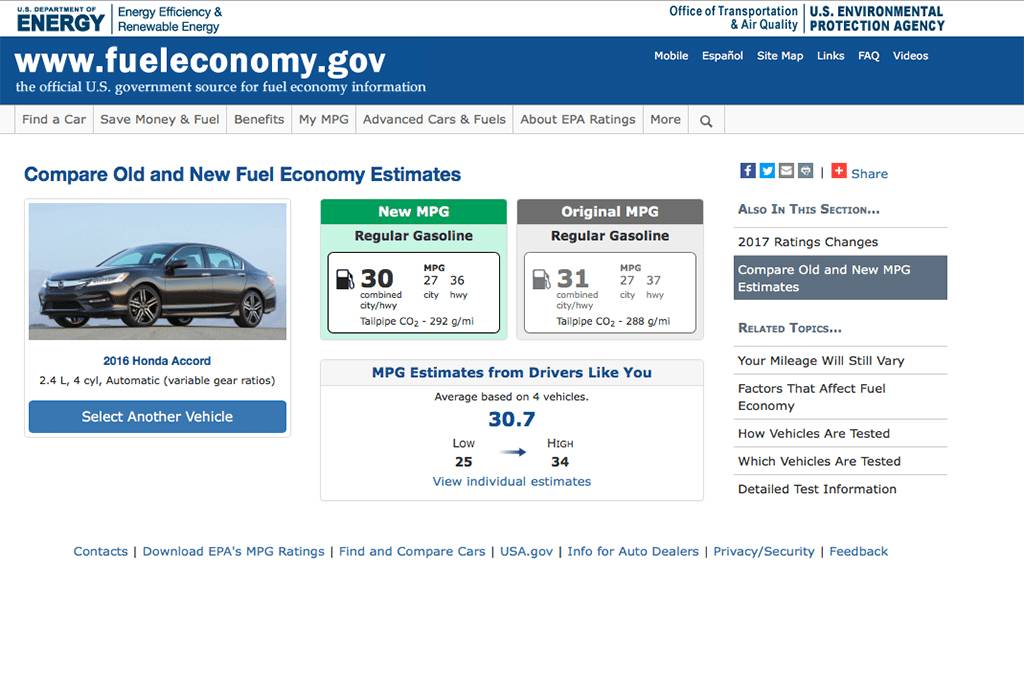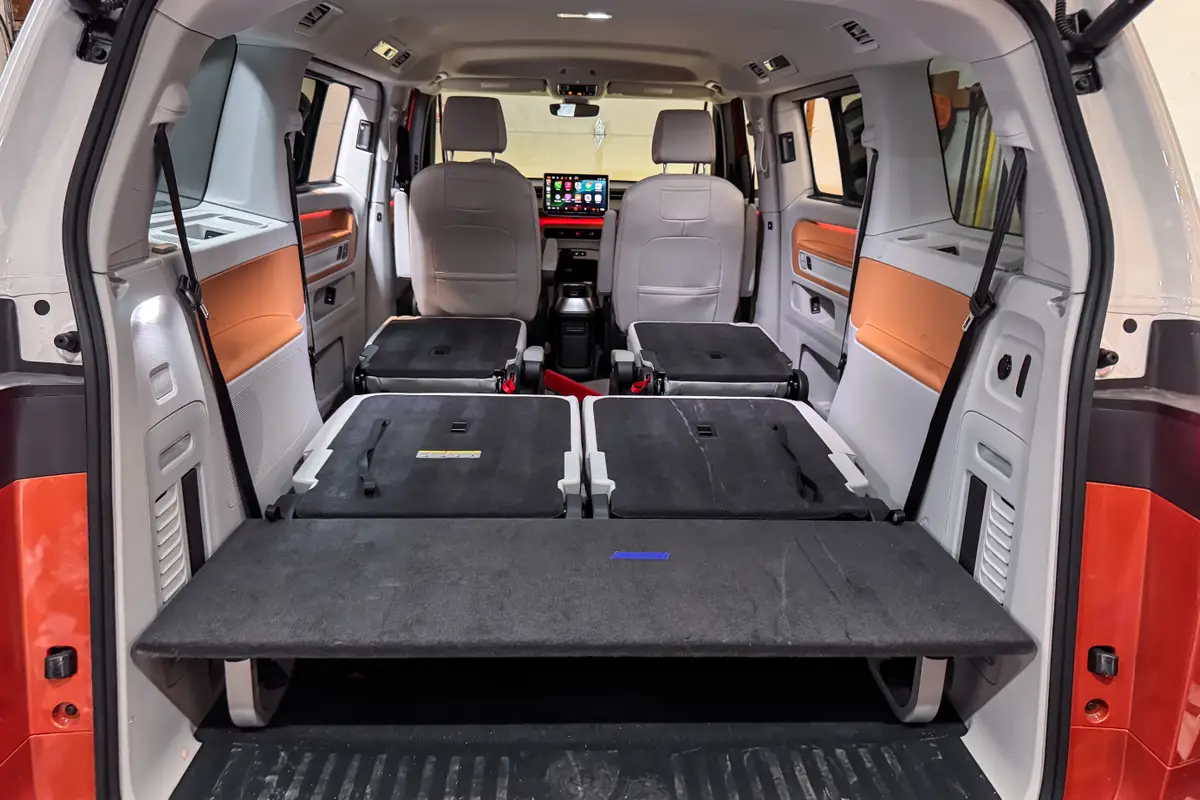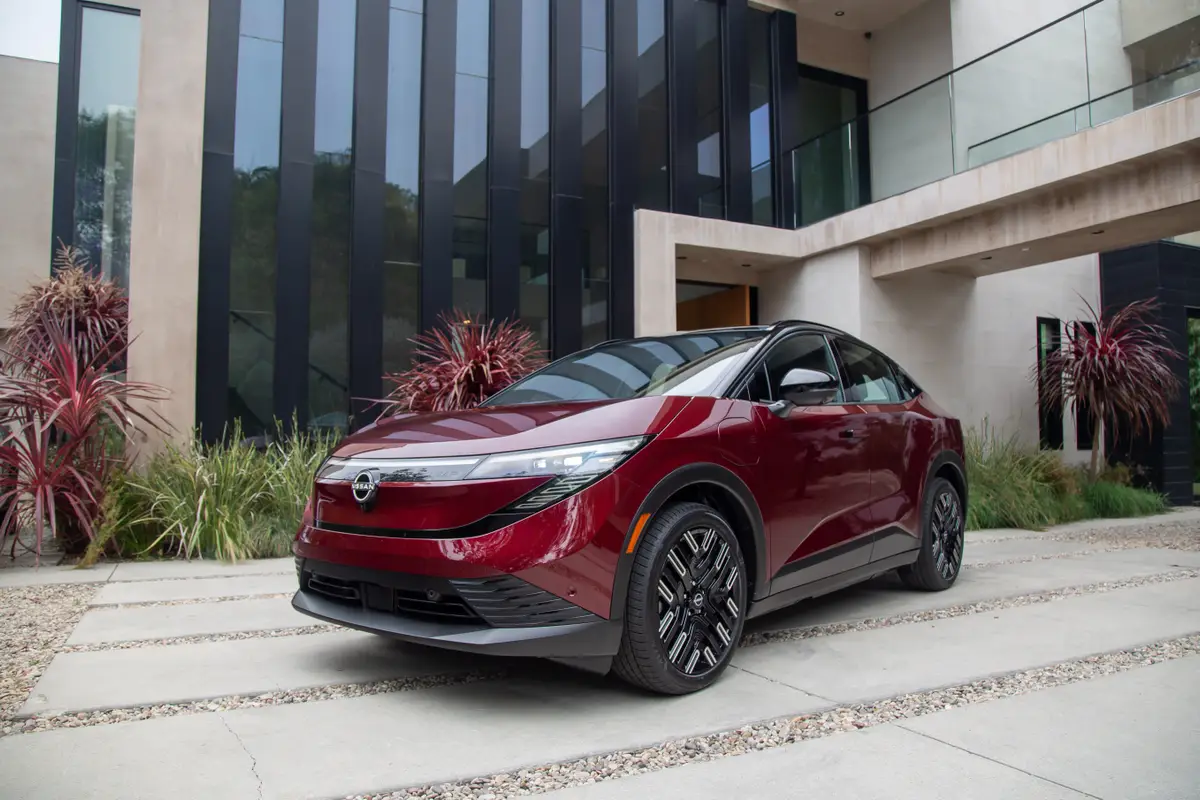EPA Updates Older MPG Ratings to Align With 2017 Calculations


CARS.COM — The EPA has updated its website, Fueleconomy.gov, to display gas mileage for older cars under the same adjustments the agency has applied for the 2017 model year. Consumers previously couldn’t make apples-to-apples comparisons between 2017 models and previous model-year vehicles, as the 2017s followed different mileage calculations.
Related: EPA Recalculates MPG Ratings for 2017
The move comes days after a Cars.com investigation uncovered the incompatibility between the EPA’s older methodology and its new calculations, intended to better reflect real-world driving. The calculations affected virtually all cars for 2017 but weren’t reflected in previous model years, which rendered the vast majority of mileage comparisons between 2016 and 2017 models inaccurate. Further complicating matters, the EPA allowed automakers to voluntarily adopt the new methodology a year early — i.e., the 2016 model year instead of 2017. A handful of cars did just that, according to the agency.
At the time, EPA officials told us the agency would update its website “over the next few weeks” so consumers could make apples-to-apples comparisons. The agency says it planned the move before Cars.com investigated the matter.
Now the EPA has posted an explanation of the 2017 ratings changes with a separate mileage comparison page for you to compare the old and new mileage ratings on any vehicle. More importantly, the agency has revised existing mileage ratings for the 2011-to-2016 model years to reflect the new calculations. If you compare mileage figures for any cars from 2011 to now on the EPA’s website, those figures should come from the same calculations for more accurate comparisons.
Used-car shoppers should note that models from 1984 to 2010 still have numbers using the prior methodology, which the EPA overhauled for the 2008 model year. If you stack up the mileage for an older car against anything from 2011 onward, you won’t have an apples-to-apples comparison because the mileage figures come from separate calculations. (But you can go to the EPA’s 2017 mileage comparison page, look up the newer model’s unadjusted original mileage and get a consistent comparison with the older model.)
The EPA says the update amounts to a slight difference in mileage, with some cars falling by 1 mpg and “a small number” falling 2 mpg. A Cars.com analysis of 84 fuel-economy labels for popular cars that carried over with no mechanical or aerodynamic changes from the 2016-to-2017 model years indicated the same trend, with 23 labels (27.4 percent) falling 1 or 2 mpg in EPA combined mileage.
“Not all changes to MPG values in 2017 models can be attributed to the updated calculations,” the EPA cautions. Indeed, many cars have other updates, from mechanical changes to a full redesign, that could have affect mileage for better or worse.
It’s unclear if this affects what you’ll see on existing window stickers, as new 2016 models that are still on dealer lots could still have window stickers that reflect the old calculations. Asked if the EPA had the authority to force dealers to reprint the stickers, an agency spokesperson did not provide an immediate answer.

Former Assistant Managing Editor-News Kelsey Mays likes quality, reliability, safety and practicality. But he also likes a fair price.
Featured stories




